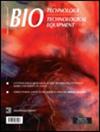Traditional microbial control methods used in sake brewing effectively suppress predominant bacteria emerging during production of rice koji
IF 1.4
4区 生物学
Q4 BIOTECHNOLOGY & APPLIED MICROBIOLOGY
引用次数: 0
Abstract
Rice koji is a raw material used in the production of sake; however, details regarding the microbial flora and their dynamics in rice koji during the production process are poorly understood. Clarifying these issues can contribute to proposing a method and evaluation that will improve the quality of rice koji and sake. The aim of this study was to determine the microflora in rice koji and the effectiveness of the traditional microbial control techniques used in the sake production process. We analyzed the diversity and changes in bacterial flora during rice koji production by amplicon sequencing of the 16S rRNA gene. The predominant taxon in all rice koji samples was family Staphylococcaceae. The microbial population and the changes in its distribution for five consecutive stages in rice koji production were examined by direct colony counting. Bacteria counts in all samples were below the limit of detection initially, then increased rapidly toward the final stage. The predominant bacterial colonies from all samples were yellow and were identified as Staphylococcus gallinarum through 16S rRNA gene sequence similarity. The S. gallinarum isolates exhibited faster growth in pregelatinized rice medium. Interestingly, the growth of S. gallinarum isolates was suppressed by low temperature (12 °C), ethanol concentration (≥6%) and the addition of lactic acid, which are traditional microbial control methods used during sake fermentation. Therefore, proper control of the traditional sake production process can effectively inhibit the growth of undesirable bacteria such as S. gallinarum that emerge during the production of rice koji.清酒酿造中采用的传统微生物控制方法能有效抑制米曲生产过程中出现的优势菌群
米曲是生产清酒的原料;然而,关于米曲生产过程中微生物菌群及其动态的细节知之甚少。澄清这些问题有助于提出提高米曲和清酒质量的方法和评价方法。本研究的目的是确定米曲中的微生物区系以及清酒生产过程中传统微生物控制技术的有效性。利用16S rRNA基因扩增子测序分析了水稻曲生产过程中细菌菌群的多样性和变化。所有稻曲样品的优势分类群均为葡萄球菌科。采用直接菌落计数法对水稻曲生产连续5个阶段的微生物种群及其分布变化进行了研究。所有样品的细菌计数最初均低于检出限度,然后在最后阶段迅速增加。所有样品的优势菌落均为黄色,通过16S rRNA基因序列相似性鉴定为鸡用葡萄球菌。鸡单胞菌分离株在预糊化的水稻培养基中生长较快。有趣的是,低温(12°C)、乙醇浓度(≥6%)和添加乳酸是清酒发酵过程中传统的微生物控制方法,这三种方法都抑制了鸡鸡沙门氏菌的生长。因此,合理控制传统清酒的生产过程,可以有效抑制米曲生产过程中出现的鸡鸡沙门氏菌等不良细菌的生长。
本文章由计算机程序翻译,如有差异,请以英文原文为准。
求助全文
约1分钟内获得全文
求助全文
来源期刊

Biotechnology & Biotechnological Equipment
工程技术-生物工程与应用微生物
CiteScore
3.10
自引率
0.00%
发文量
90
审稿时长
1 months
期刊介绍:
Biotechnology & Biotechnological Equipment (B&BE) is an international open access journal publishing cutting-edge research. A modern world requires modern biotechnology and nanobiology. The journal is a forum that provides society with valuable information for a healthy and better life and promotes “the Science and Culture of Nature”.
The journal publishes original research and reviews with a multidisciplinary perspective; expanded case reports with a focus on molecular medical research and advanced practice in evidence-based medicine are also considered.
 求助内容:
求助内容: 应助结果提醒方式:
应助结果提醒方式:


